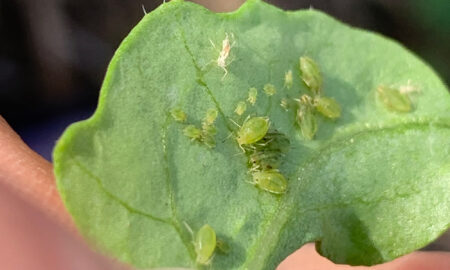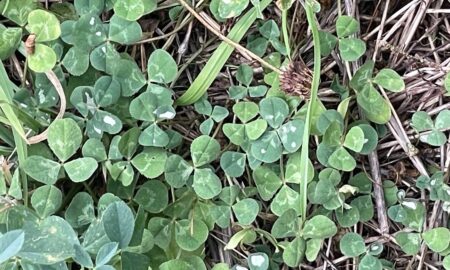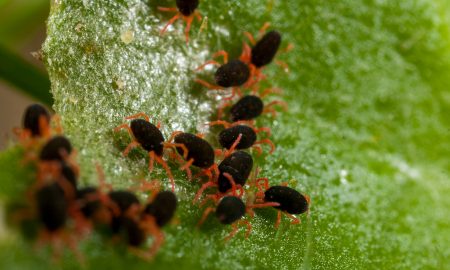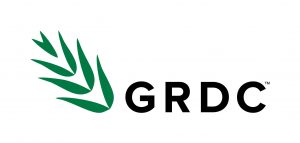Are you seeing clusters of powdery, grey-green aphids on the tops of canola plants?
You’re likely dealing with the cabbage aphid, Brevicoryne brassicae.
Recent reports suggest populations of this pest are more abundant than usual in south-eastern cropping regions.
Here’s what you need to know to protect your crops and manage cabbage aphid this spring.
Cabbage aphid concerns in canola
Moderate to high populations of cabbage aphid have been reported in flowering and podding canola across the Victorian Mallee, Wimmera, and Northern Country, and in the New South Wales Riverina. In some paddocks, advisers are reporting numbers much higher than seen in previous seasons.
The cabbage aphid is a piercing and sucking pest of cruciferous plants, like canola. Both adults and nymphs use their needle-like mouthparts to pierce into plant tissue, sucking out phloem sap.
During flowering and pod-development, cabbage aphid colonies cluster on the upper stems, flowers and pods of canola plants. If colonies are dense enough, yield loss can occur through reduced pod set, pod fill and grain quality.
Canola is most vulnerable to this feeding damage during bud formation and flowering.
Cabbage aphid is not expected to be a concern for turnip yellows virus transmission. So far, it has only been shown to transmit Eurasian strains of the virus very inefficiently (Personal communication, Congdon 2024).


Green peach aphid is around too
Green peach aphid, Myzus persicae, has also been observed in the upper canopy of some maturing canola crops.
With respect to canola, green peach aphid usually colonises the underside of leaves and in such cases, is not typically expected to have an impact on yield in advanced canola.
However, in dry years we have seen green peach aphid move up onto stems and pods before, especially with senescence of lower leaves, and suspect this is what is occurring this year. But whether this direct feeding in the upper canopy has an impact on yield and oil quality has not been studied.
When in the upper canopy, green peach aphid doesn’t appear to colonise as densely as a cabbage aphid does, so our hunch is that in most cases, control for green peach aphid alone is likely unwarranted in advanced canola.
And while green peach aphid is the key vector of turnip yellow virus, the best available evidence suggests that infection acquired after flowering is unlikely to lead to yield loss in crops as a result.
For more information on green peach aphid management, and how to tell the difference from cabbage aphid, see the new Green Peach Aphid – Best Management Practice Guide.


Factor in your beneficials
As aphid colonies grow in spring, so do the numbers of beneficial insects (‘natural enemies’). These highly mobile predators are often spotted around aphid colonies and can help suppress cabbage aphid numbers.
There is a delay between aphid population build up and the beneficials making an impact. Monitoring both aphid and beneficial populations over time is key to determining the impact of beneficials. One thing to note with parasitoid wasps: they’re some of the most efficient beneficials, but their activity can be tricky to spot. Aphids start to look like “mummies” (swollen and bronzed) only when wasp development is almost complete. Since parasitism might not be obvious, the actual level of wasp activity in a crop may be higher than what can be seen by eye.

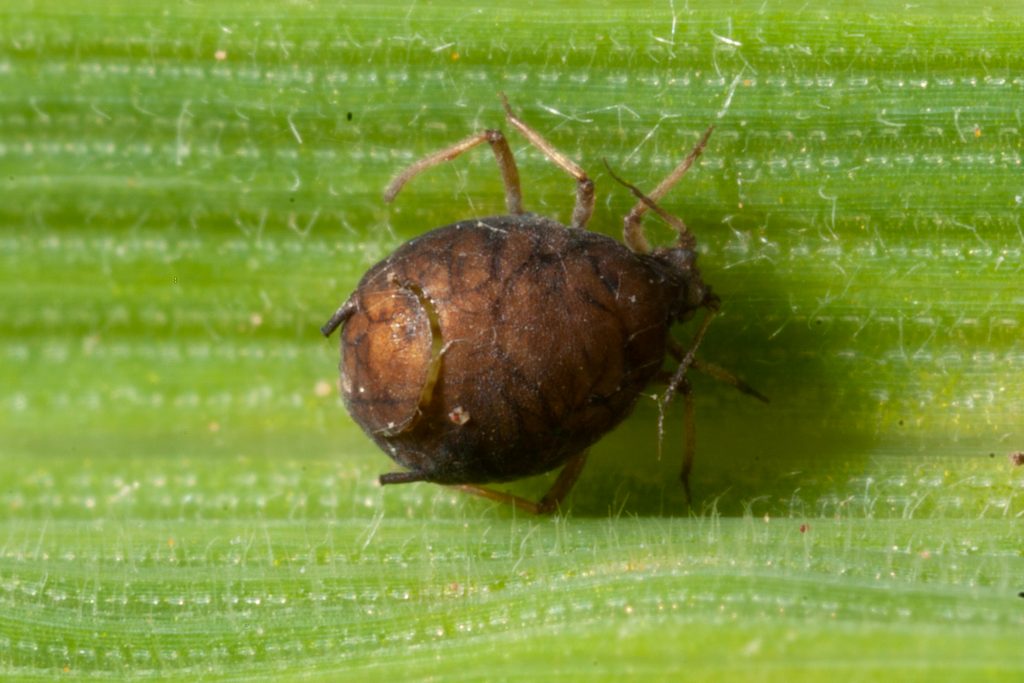
Knowing when to act against cabbage aphid
While beneficial insects do a great job of controlling aphid populations, there will be cases where they just aren’t getting on top of the problem and spraying is warranted. Particularly during a warm, dry spring, when aphids can rapidly multiply, and moisture stressed crops can’t compensate for feeding damage as readily.
To help you make informed management decisions, there are some nominal thresholds or ‘rules of thumb’ for cabbage aphid, based on the insights of experienced consultants and researchers:
- More than 20% of canola plants infested with aphids (DPIRD 2022)
- More than 50% of canola plants with clusters 25 mm long on stems or 4–5 stems per m2 with clusters 50 mm long on stems (Hertel et al. 2022)
Keep in mind that these thresholds are meant to serve as general guidelines and do not consider dynamic variables such as grain prices, moisture stress or insecticide costs.
When monitoring and using thresholds to make decisions, assess at least five points of the paddocks, as aphid distribution is often patchy.
Selecting insecticides
To our knowledge, cabbage aphid has not evolved resistance to insecticides in Australia, so registered insecticides should provide effective control.
However, we recommend using more selective insecticides to minimise impact on beneficial insects. You can check out the Beneficials Chemical Toxicity Table for guidance.
You may also consider spot spraying impacted patches rather than treating whole paddocks. This targeted approach helps manage aphid hotspots whilst reducing overall impacts on beneficials.
Cover image: Photo by Andrew Weeks, Cesar Australia


